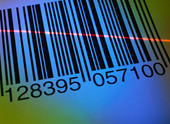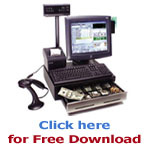UPC Bar Code Marks 35th Anniversary
on June 2nd, 2009 at 9:18 amThis week marks the 35th anniversary of the Universal Product Code (UPC), a milestone that will be celebrated this Wednesday with over 800 attendees at the annual U Connect Conference in Orlando by GS1 US, the developer and administrator of the bar code that now appears on more than 200,000 businesses in the United States.One of the world’s best-known symbols, the UPC comprises a row of 59 machine-readable black and white bars and 12 human-readable digits. Both the bars and the digits convey the same information: the identity of a specific product and its manufacturer.
Originally developed to help supermarkets speed up the checkout process, the first live use of a UPC took place in a Marsh Supermarkets store in Troy, Ohio, on June 26, 1974, when a cashier scanned a package of Wrigley’s gum. It ushered in extraordinary economic and productivity gains for shoppers, retailers and manufacturers alike, with estimated annual cost savings of $17 billion in the grocery sector alone, according to one study.
“The UPC made the modern retail store possible,” said Rodney McMullen, vice chairman of The Kroger Co., which operates more than 4,000 stores in different formats and under different banners, or names. “It allows us to carry tens of thousands of items in a given store and move shoppers through quickly while offering them many different ways to save money.”
Every UPC incorporates three elements — the brand owner’s GS1 company prefix, the specific item’s reference number, and a check digit, which is calculated by the combination of the preceding numbers and ensures data accuracy. Contrary to one popular myth, however, the ubiquitous bar code does not contain a product’s country of origin.
Neverheless, the UPC is one manifestation of the Global Trade Item Number, a foundational aspect of the GS1 System that enables consistent, standard identification of products and other items in the supply chain globally.
The next generation bar code, GS1 DataBar, can be found increasingly on coupons and loose produce such as apples, pears, and tomatoes. On Jan. 1, 2010, its “sunrise date,” supermarkets will begin scanning and processing the GS1 DataBar, which can be configured in different formats to fit a smaller space or carry additional information, such as “best before” or expiration dates, or lot numbers.
For more information, visit www.GS1US.org.
















Great blog on barcodes. I am new to labeling and have recently started doing my own barcode label design. Glad to find a great post on labels, am doing a bit of research to help me out.
Thanks again
Great blog on barcodes. I am new to labeling and have recently started doing my own barcode label design. Glad to find a great post on labels, am doing a bit of research to help me out.
Thanks again